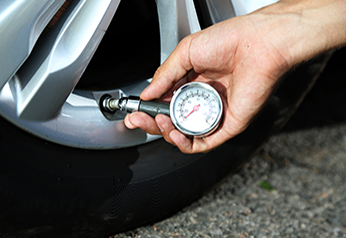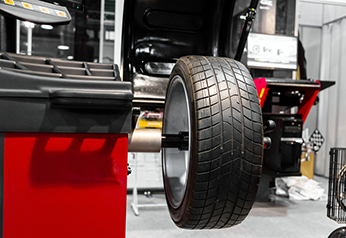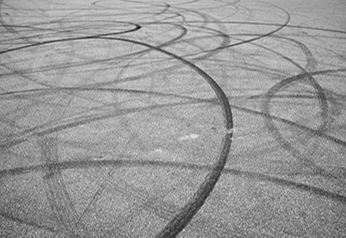
Your Complete Guide To Tyre Rotation
Tyre Rotation is a critical part of tyre maintenance.
It helps prevent uneven tread wear and prolongs your tyre's lifespan.
But If you're a new driver, the term "tyre rotation" might be confusing since everyone knows that tyres naturally rotate when we drive!
In this guide, we explain what tyre rotation is as well as discover how it can affect your tyre's useful life
What is Tyre Rotation?
Tyre rotation is when you manually change the position of your tyres on your vehicle at regularly scheduled intervals.
Changing positions, in this case, means removing your existing car tyres and switching them around in various patterns, such as front tyres go to the back and vice versa or left tyres are installed on the right and so on.
With each new rotation, your tyre is in a different place and allows it to wear its tread out evenly so your tyre can be used longer.
Why is Tyre Rotation important?
- It's one of the easiest ways to extend the life of your tyres.
- It prevents uneven tread wear and saves money since your tyres last longer.
- Keeps your tyres reliable.
- Helps detect poor wheel alignment which affects handling and increases fuel consumption.
How Often Should I Rotate My Tyres?
It is generally recommended to rotate your tyres once every six months, or every 10,000 kilometres. However, if you frequently use your car off-road, you can get them done even after 5,000 kilometres.
#TyroolaTip: Rotate your tyres when you bring your car in for an oil change
Tyroola's Step-by-step guide to DIY Tyre Rotation
1. Prepare your tools
If you want to rotate your tyres at home, make sure you have the following tools:
• Car jack
• Jack stands (2-4 pcs) - these are recommended vs cinder blocks to protect from scratches and for a more stable resting place
• your favourite tyre iron/lug wrench
2. Turn the vehicle's engine off.
• Engage the hand/parking brake for your added safety
• For manual cars, put it in first gear; for automatics, put the gear in park to prevent the car from suddenly moving which might have dangerous consequences as you are switching tyres.
3. With the car still on the ground and loosen (not remove) the lug nuts on all your wheels.
• To keep the tyre securely on the vehicle as you raise it up.
• For easy removal of lug nuts while the vehicle is elevated.
• If the lug nuts are hard to get loose and refuse to give, try standing on the lug wrench (vehicle must still be on the ground)while it is attached to the lug nuts. This is an easy way to get through the first resistance.
• Don't forget to remove the nuts counterclockwise.
4. Use your car jack to lift each wheel and place jack stands underneath to raise your car.
• Make sure you place the jack stands on the vehicle's frame to avoid slipping.
• If you have 4 jack stands, this is a pretty straightforward step. However, if you only have 2 stands, plan out how you will get this done and expect to spend more time raising and lowering your vehicle.

5. With your car elevated, slowly remove your tyres
• Rotate your tyres, following the correct rotational pattern (see below) based on your vehicle and type of tyre.
6. When each tyre is in its new position, secure them back onto the wheel via loosely screwing on the lug nuts again.
7. Slowly release each jack stand, and with the help of your car jack, lower your car back to the ground.
8. Tighten your lug nuts, and you're done!
#TyroolaTip: Keep a record of the date, the pattern you used as well as your vehicle's current mileage. This information might prove useful when you need to rotate them again in 6 months.
What happens during a tyre rotation?
When rotating your tyres, each tyre needs to be removed and refitted in a different position on your car.
To make sure you rotate your tyres to the correct position, you have to first analyse why your tyres are wearing down in a certain way and this is usually determined by your driving habits.
There is also a proper pattern of tyre rotation to follow for each specific engine and transmission layout.
If you drive a front-wheel-drive vehicle, for example, the tyre rotation pattern of a rear-wheel-drive vehicle will not be applicable to yours and so on.
Rotating Tyres on a Front Wheel Drive
The two front tyres stay on the same side of the car but are transferred to the rear axle, whereas the rear tyres switch sides and axles and are moved up to the front.
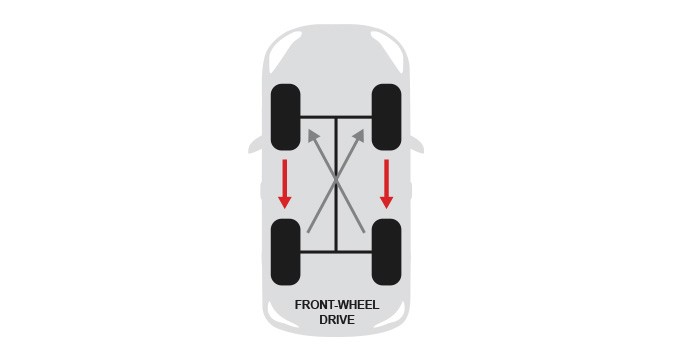
Rotating Tyres on a Rear Wheel Drive
The two rear tyres remain on the same side and are transferred to the front axle whereas the front tyres get transferred to the rear axle and switch sides.
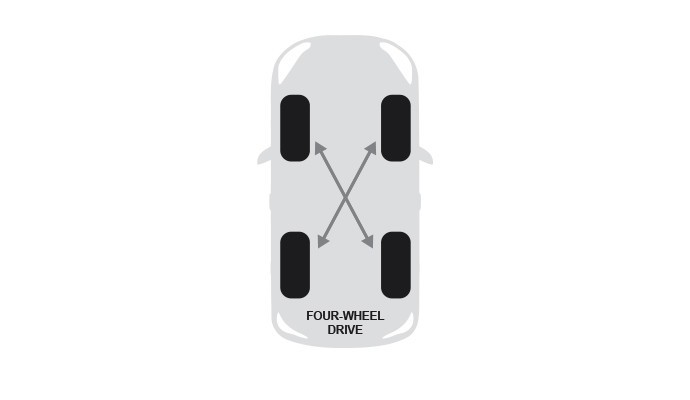
Rotating Tyres on a Four Wheel Drive
With the rotation of 4WD tyres, all the tyres swap from left to right and back to front and vice versa. So each tyre is fitted to the position diagonally opposite to its original placement.

Rotating Directional Tyres
These rules don’t apply if your tyres are ‘directional tyres’. This is because the tread pattern of directional tyres is designed specifically in relation to its position on the vehicle. This makes switching sides dangerous. The tyres change from front to back and back to front but do not change sides so remain on the same side of the car they were originally fitted on.
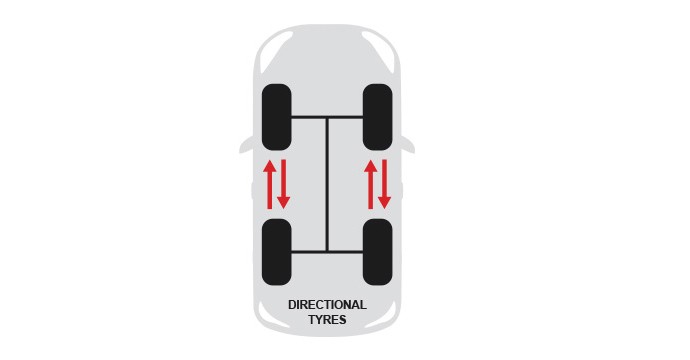
What about my spare tyre?
Back in the day, it was recommended that spare tyres should also be rotated into the vehicle and be given blocks of time in regular, daily use so all the tyres are even.
The spare tyres of today, however, are no longer capable of extended, daily driving. They are lightweight, with shallower tread and are meant to be used as a quick fix so you can get to the shop and get your original tyre repaired.
Check your boot first - most off-roaders, utes and SUVs still have full-sized and fully functional matching spares to your current set. If you do, then, by all means, rotate them as well.
What to expect from your newly rotated tyres?
Take your car out for a quick spin immediately after rotation and observe any difference in the quality of your ride.
It is normal for your ride to be a bit stiff and noisy for a few days since the wear on the tread pattern is already evening out.
But if you feel that your ride has worsened and grown more uncomfortable, recheck your tyres. This could be a sign that the tread might be beyond saving and your tyres need to be replaced.
Need further help with Tyre Rotation?
If you need more information about tyre rotation, reach out via our contact page or social media accounts and members of #TeamTyroola will assist you.
Tyroola has a wide selection of tyres to fit all budgets and all your driving needs.
You can start shopping for the perfect set of tyres here.
